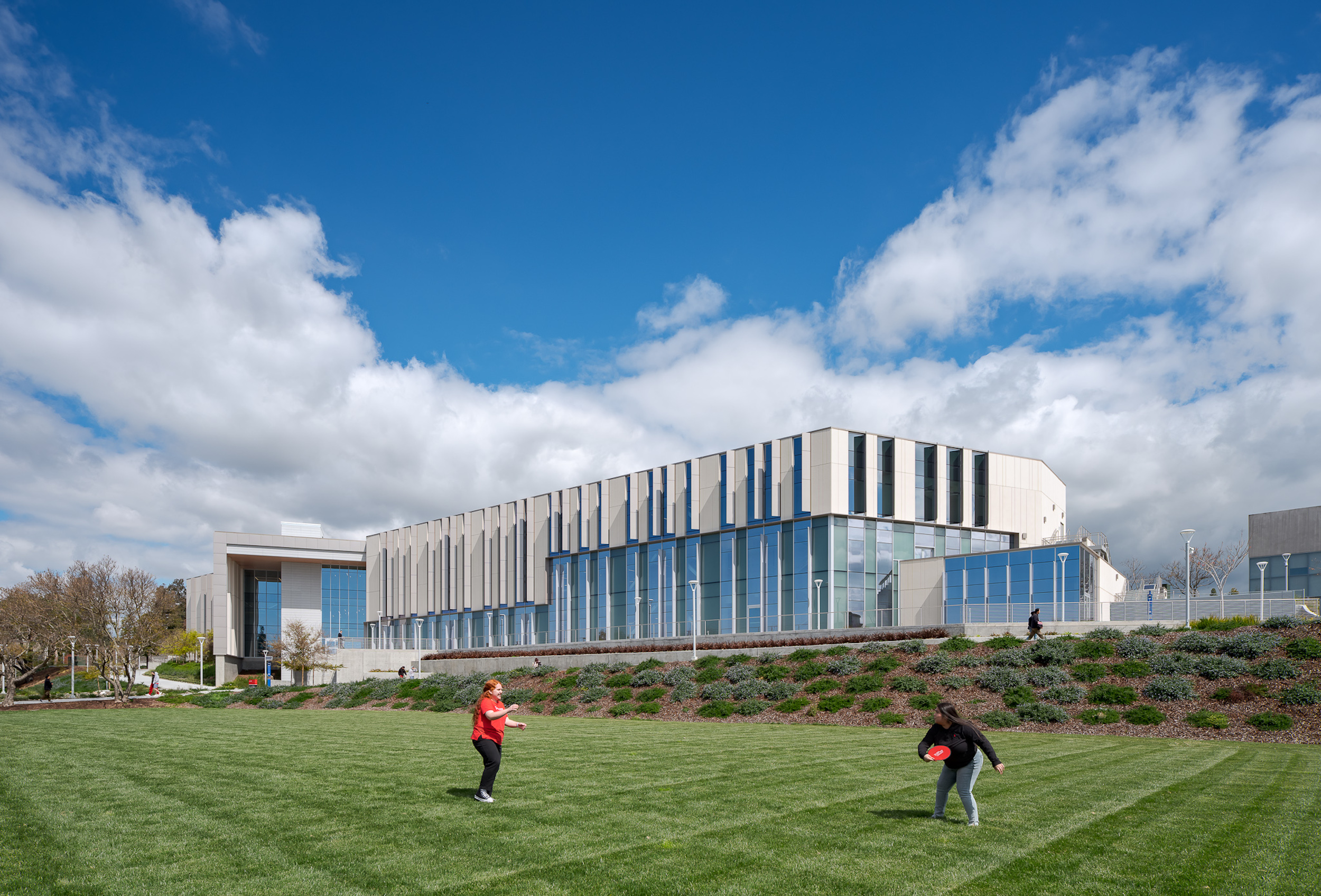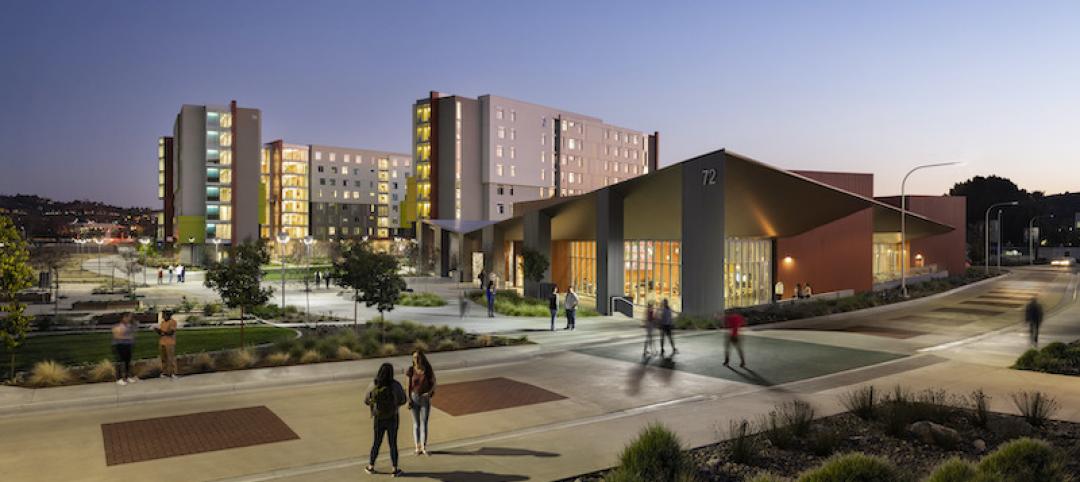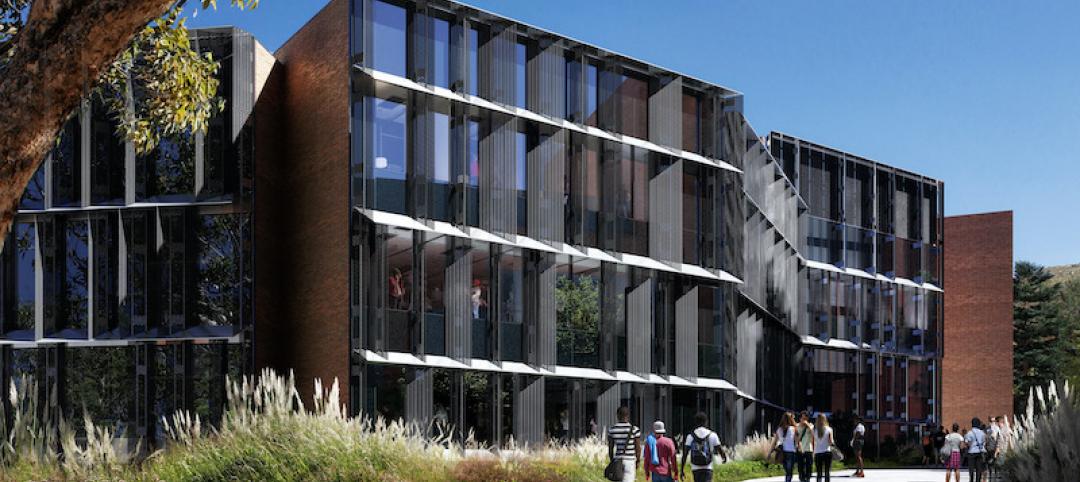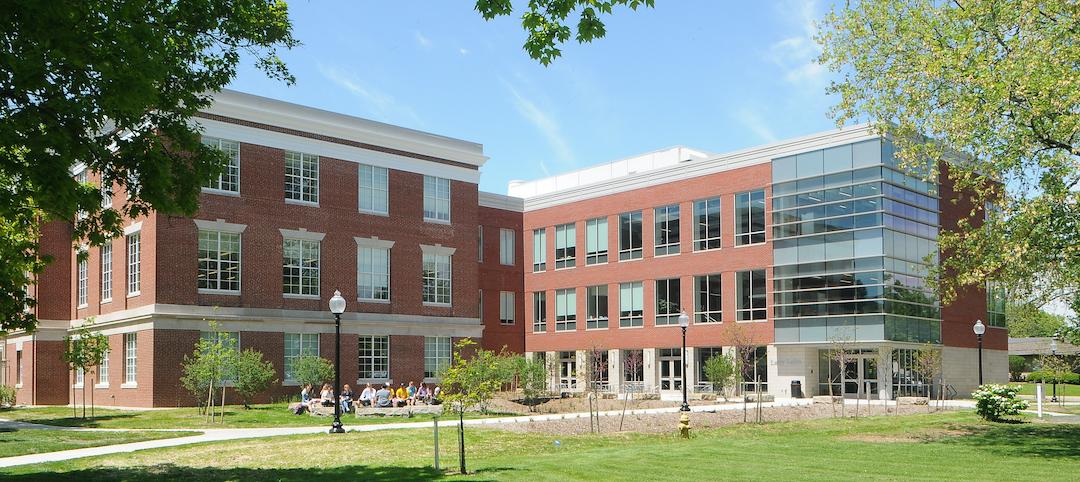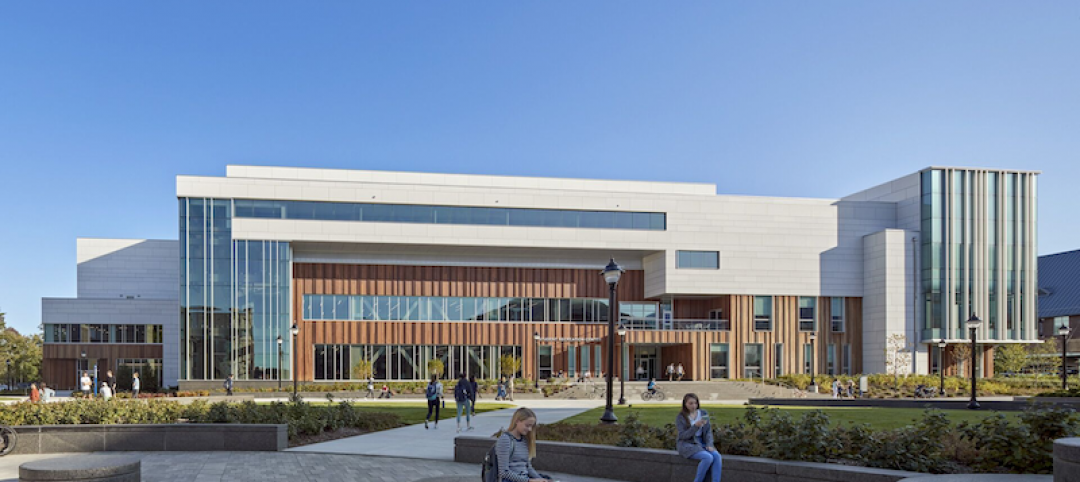A three-story “library-plus” building at California State University, East Bay (CSUEB) that ties together the upper and lower campuses was recently completed. The 100,977-sf facility, known as the Collaborative Opportunities for Research & Engagement (“CORE”) Building, is one of the busiest libraries in the CSU system. The previous library served 1.2 million visitors annually.
The new building offers students 700 more seats and 21 more group study rooms than the facility it replaced. Much more than a library, CORE brings traditional library services together with learning, innovation, and technology; collaboration and engagement; and social justice, diversity and sustainability.
It houses the Student Center for Academic Achievement (SCAA—for peer tutoring and study groups) and the Hub for Entrepreneurship, both of which help students become self-directed learners in the Information Age economy.
Equipped with state-of-the-art information and audio-visual technologies, the building provides diversity of spaces to support study rooms and collaborative commons along with multimedia production and library spaces for print and digital collections, archives, and special collections.
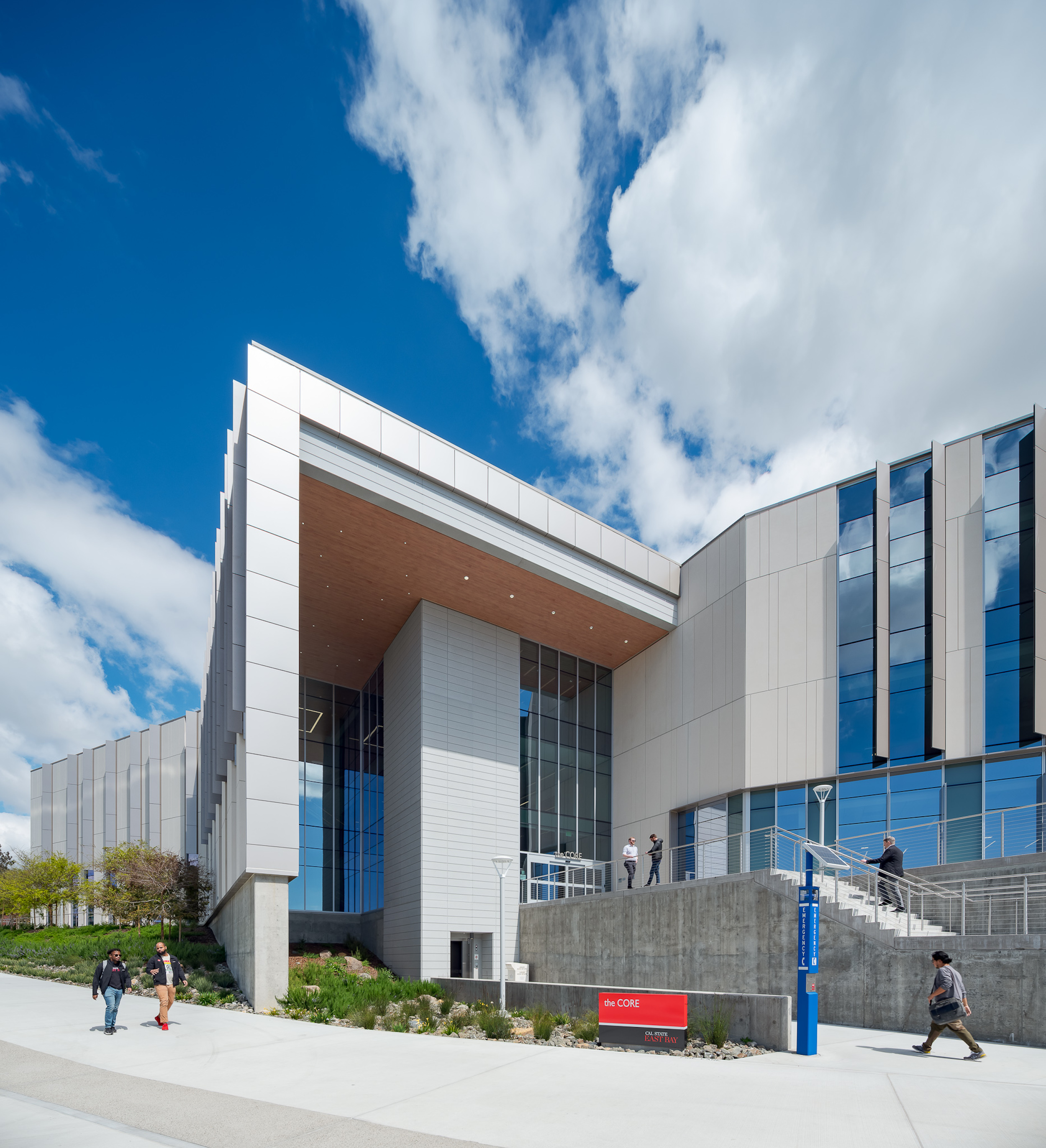
Generous open space and fenestration help knit the interior into a cohesive sum of many essential parts. In anticipation of earning LEED Gold certification, the building’s HVAC system aims for healthy indoor air quality, high levels of user controllability, and exceptional energy efficiency.
Each of CORE’s three stories offers a different approach to learning designed to help develop lifelong skills. The library is on Level Two. Level One houses a collaboration zone and innovation labs. Level Three is home to the SCAA and a roof deck provides an additional place for quiet study.
The visual dialogue within the building’s interior emphasizes the relationship between spaces that serve both the academic and social needs of students. CORE’s structure and functionality were designed to help CSUEB hone a distinct identity in the Bay Area’s rich educational landscape and enable it to be viewed as something more than a “commuter school.”
On the building team:
Owner and/or developer: California State University, East Bay
Architect of record, design architect: Carrier Johnson + Culture (Exterior)
Associate Architect: Anderson Brulé Architects (Interior)
MEP engineer: Integral Group
Structural engineer: Forell/Elsesser Engineers
General contractor/construction manager: Rudolph and Sletten
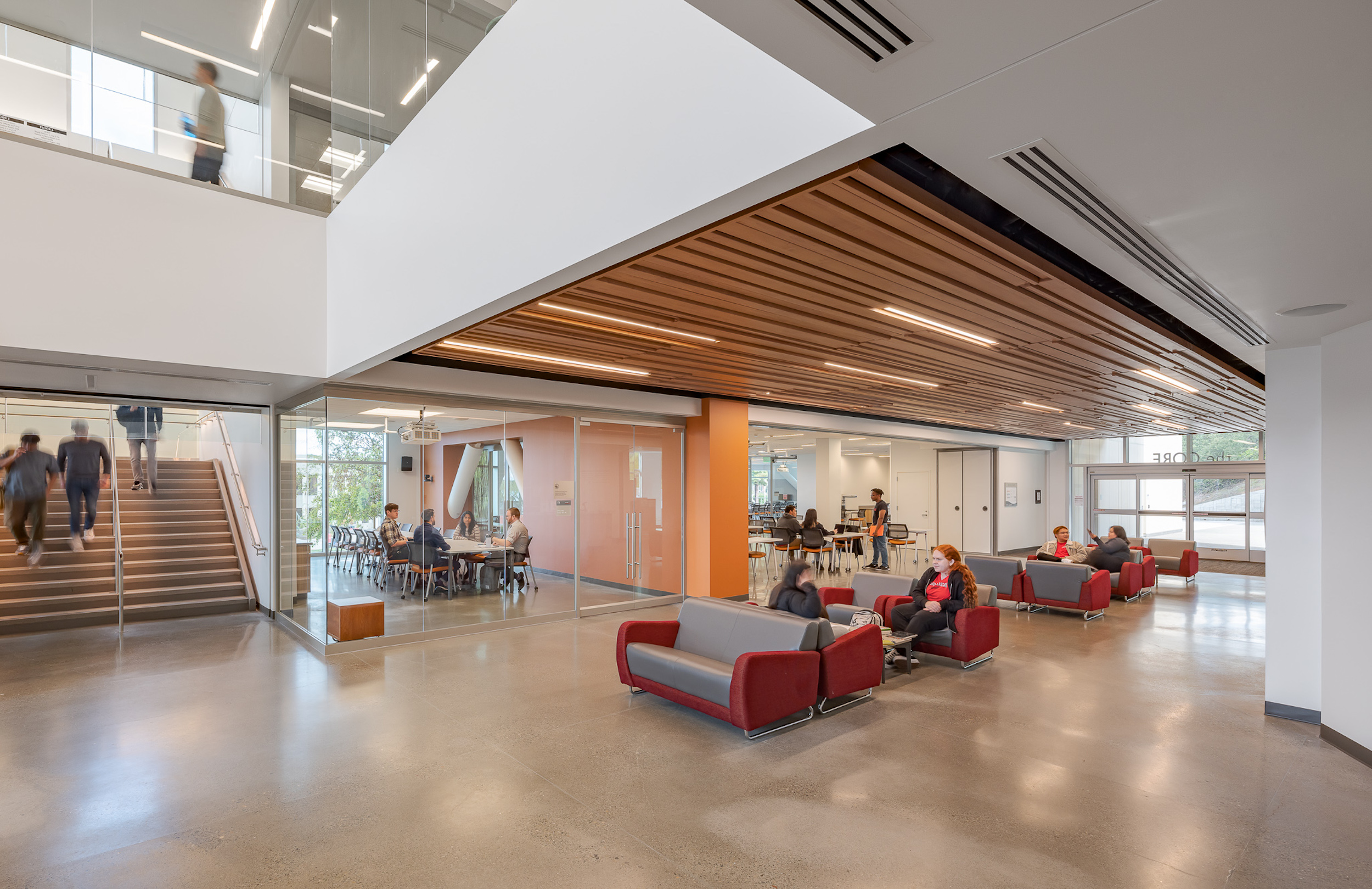
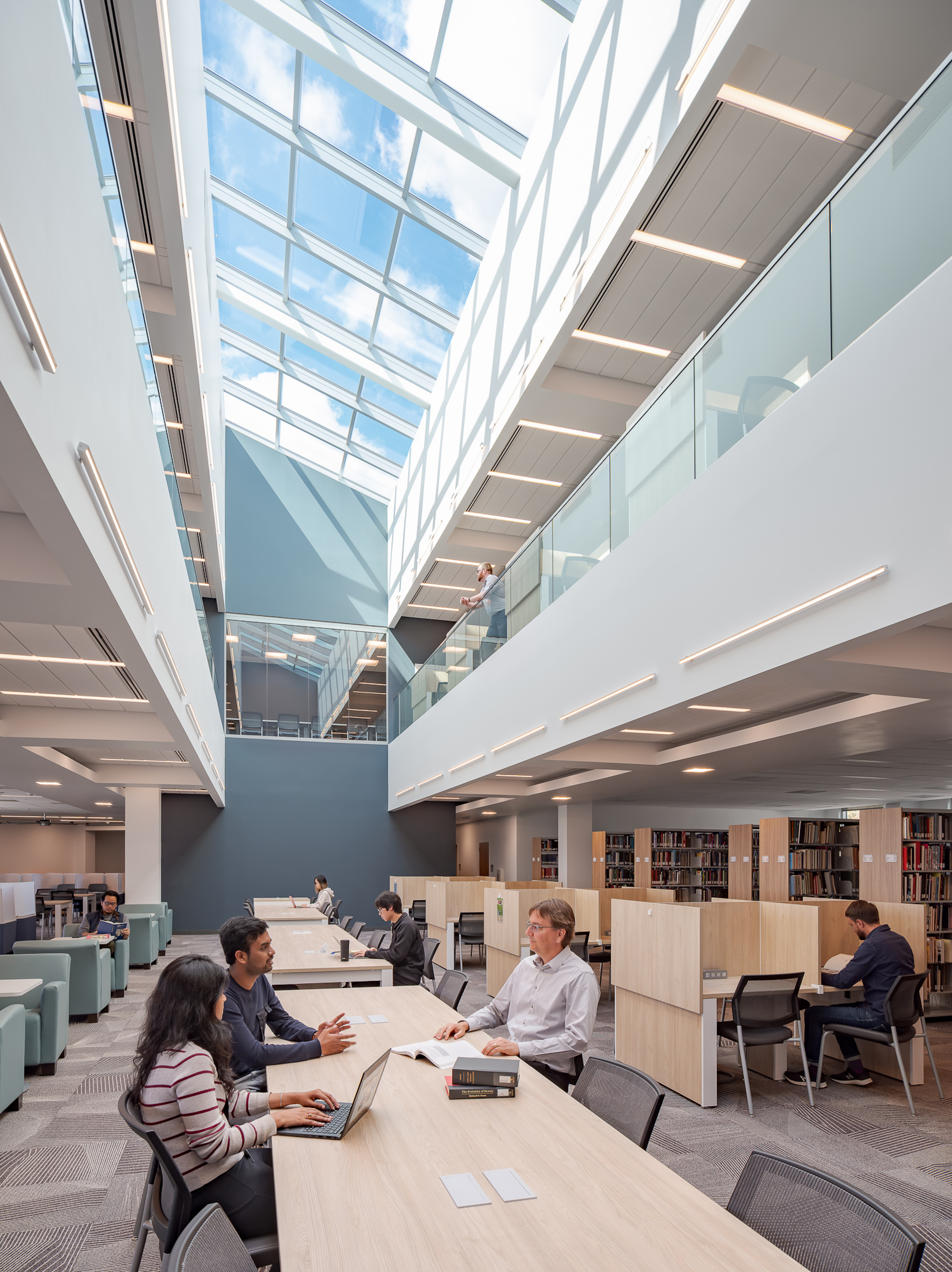
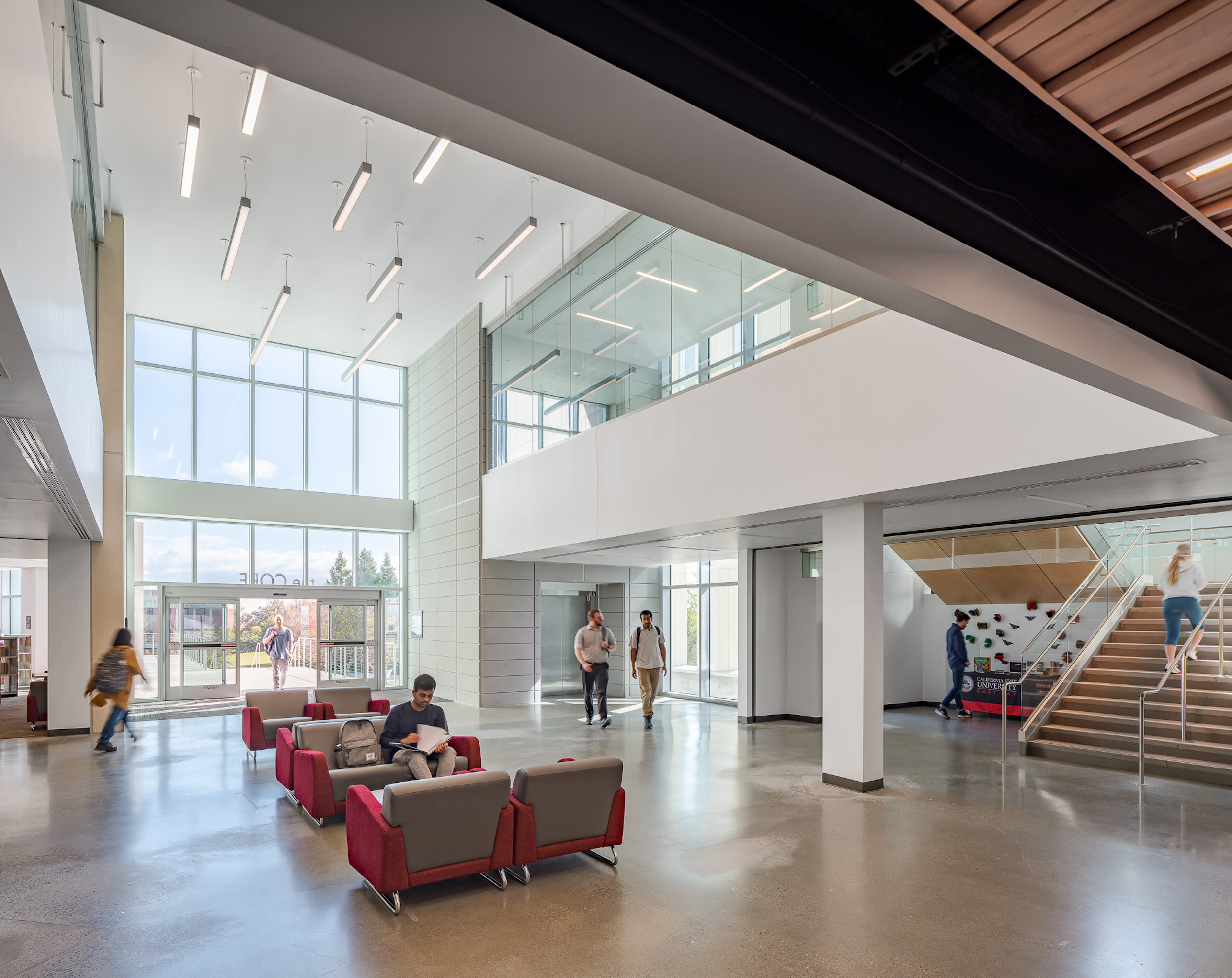
Related Stories
University Buildings | Jul 23, 2020
Two eight-story residential towers and a dining commons complete on Cal Poly Pomona’s campus
HMC Architects designed the project.
University Buildings | Jul 15, 2020
New Cal Poly Research and Innovation Center includes features for a COVID-19 world
ZGF Architects is designing the building.
University Buildings | Jul 14, 2020
Cornell College partners with Johnson Controls to improve campus energy efficiency
The plan will reduce the college’s energy usage by 20%.
University Buildings | Jun 3, 2020
Renovation can turn older university buildings into high-performing labs
David Miller of BSALifeStructures offers technical advice on renovation of college and university laboratories and scientific research facilities.
University Buildings | Jun 2, 2020
COVID-19 and teaching the next generation of nurses
COVID-19 hasn’t just upended healthcare delivery, the workplace, and all levels of education – the economic toll is still being realized – and capital projects on college and university campuses will inevitably be impacted as public and privately funded projects adjust to the budget crunch.
University Buildings | May 20, 2020
JCJ Architecture, Moody Nolan complete UCONN's Student Recreation Center
The project sits at the center of the Storrs campus.
University Buildings | May 19, 2020
Clemson's new Outdoor Education Center uses a Mass Timber Structural System
Cooper Carry designed the project.
University Buildings | Apr 29, 2020
Dixie State University's new Human Performance Center
Hastings+Chivetta designed the project.
Coronavirus | Apr 10, 2020
COVID-19: Converting existing hospitals, hotels, convention centers, and other alternate care sites for coronavirus patients
COVID-19: Converting existing unused or underused hospitals, hotels, convention centers, and other alternate care sites for coronavirus patients
University Buildings | Apr 9, 2020
Designing for the next generation of student life: Academically aligned
Since many academic departments have been concentrated in their own buildings or portions of campus, bringing these disciplines into a shared facility is fairly new territory.


